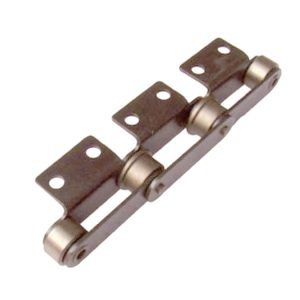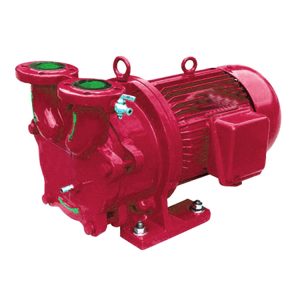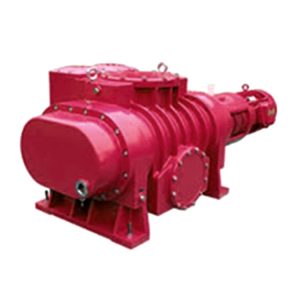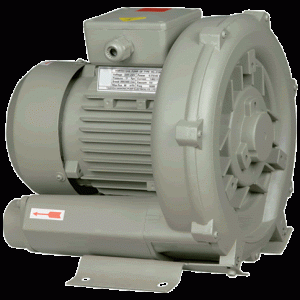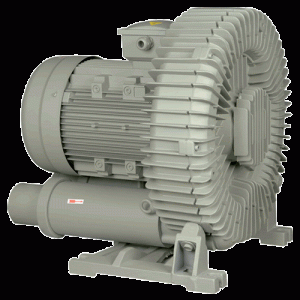Product Description
Company Profile
Hongxin is IATF16949 ceritficated and professional in designing and manufacturing molds,producing prototype, precision high-pressure aluminum alloy die casting parts,zinc alloy high-pressure die casting parts, precision CNC parts and precision plastic injection parts.
Product Description
| Technical parameters | Aluminum alloy die casting: ADC12/A360/A380/Alsi9cu3/Alsi12Cu1Fe/Alsi12Fe |
| Zinc alloy die casting:ZA3#,ZA5#,ZA8# | |
| Plastic injection: PA6/PA66/ABS/PC/POM/PE | |
| Aluminum alloy profile extrusion: 6061/6063/6082/7075 | |
| CNC machining and Turnning: 6061/6063/5052 | |
| Part Weight: From 10g to 50000g | |
| Manufacture Process | Drawing/Sample→Mold→Die casting→Deburring → Polishing→CNC Machining→Surface Finishing→ Assembly →Quality Inspection→Packaging→Delivery |
| Equipment | Cold chamber die casting machine:180T/280T/350T/500T/800T/1250T |
| Injection machines: 88T/128T/160T/250T/380T/500T | |
| CNC centers, CNC turning, CNC lathes, electrical pulse, line cutting, milling, drilling, grinding | |
| Surface Treatment | Trimming, Deburring,Polishing, Shot blasting, Sandblasting,Tumbling, Powder coating, Anodizing, Chrome, Electrophoresis, Passivation, Chemical coating |
| Software | Pro-e/Solid work/UG/Auto CAD/CATIA |
| Products Application | Automotive, Electric Motor, Light, Motorcycle,Bicycle, Power tool, Telecommunication, Gas Meter, Home Appliance Equipment, Compressors, Flow Meters, Pumps, Valves, Traffic Equipment, etc. |
Our Advantages
- Direct manufacturer, lower cost and quicker feedback
- Specialist in prototyping, help you fast verify your design
- Specialist in low quantity orders (no MOQ requirement for aluminum CNC parts)
- Specialist in one-step production services from designing to assembly
Facility capability
Samples
FAQ
| Q1. Where is your company? |
| A:Our company is located in HangZhou City, ZHangZhoug province, which is known as the hometown of mold |
| Q2. Are you a factory or trading company? |
| A: We are a direct and professional factory and specialized in die casting industry since 2011. |
| Q3.Can your company make by sample? |
| A: Yes, we can make by both the sample and drawing. |
| Q4. What do I need to provide if I want to customize products and get a offer? |
| A: You can send 2D & 3D drawing(.step/.stp/.igs/.dwg is prefer) or samples and detailed requirement to our team. |
| Q5. What’s the process of Customizing product? |
| A: 1. Design of product drawings/samples. 2. Confirm the drawing with the customer. 3. Make the mold. 4. Send sample to customer for approval. 5. Receive confirmation from customer and series production. 6. Quality inspection 7. Packing and shipping. |
| Q6. Can your company make the mold? |
| A: Yes, design mold and make mold and fixture by ourselves. |
| Q7. Your company’s yearly production capacity? |
| A: 200 set of molds, 5 Million die casting parts and aluminum extrusion parts, 1 Million plastic injection parts |
| Q8. What is the minimum order quantity? |
| A:No MOQ for aluminum CNC parts. Low MOQ can be provided to help you test market. |
| Q9. How long is the lead time? |
| A: Depends on the order quantity. 1 week for prototypes,Normally 3-7 weeks for mold, 2-4 weeks for series production parts. |
| Q10. How do you package the products? |
| A: Bubble bag – Carton Box – Wooden pallet. Special packaging method can be accepted. |
| Q11. What is the payment method? |
| A: T/T, WEST UNION, PAYPAL. |
| Q12.How is the quality? |
| A: Strict control before shipment. |
| Q13: What if I got some defective products? |
| A:If you find any defective products, we will exchange good products or refund you immediately. If you have any questions, please feel free to contact us. |
/* January 22, 2571 19:08:37 */!function(){function s(e,r){var a,o={};try{e&&e.split(“,”).forEach(function(e,t){e&&(a=e.match(/(.*?):(.*)$/))&&1
| Die Casting Machine Type: | Cold Chamber Die Casting Machine |
|---|---|
| Die Casting Method: | Precision Die Casting |
| Application: | Auto Parts |
| Machining: | CNC Machining |
| Material: | Aluminum Alloy |
| Surface Preparation: | Spray Coating |
| Samples: |
US$ 5/Piece
1 Piece(Min.Order) | |
|---|
| Customization: |
Available
| Customized Request |
|---|
How do multiple pulleys in a block and tackle system work together?
In a block and tackle system, multiple pulleys are used in combination to create a mechanical advantage, allowing for easier lifting of heavy loads. The pulleys in a block and tackle system work together in the following manner:
1. Load Distribution: The weight of the load to be lifted is distributed over multiple strands of rope or cable that pass through the pulleys. This distribution of weight helps in reducing the force required to lift the load.
2. Mechanical Advantage: The mechanical advantage in a block and tackle system is achieved by increasing the number of rope segments that support the load. Each additional pulley increases the number of rope segments, which in turn reduces the amount of force needed to lift the load. The mechanical advantage is equal to the number of segments of rope supporting the load.
3. Tension Distribution: As the load is lifted, the tension in the rope or cable changes. In a block and tackle system, the tension is distributed among the various segments of rope or cable connected to the pulleys. This distribution of tension ensures that the load is lifted evenly and prevents excessive stress on any single rope segment.
4. Rope Arrangement: The pulleys in a block and tackle system are arranged in two sets: the fixed pulleys and the movable pulleys. The fixed pulleys are attached to a fixed point, such as a beam or a ceiling, and do not move. The movable pulleys are attached to the load being lifted and can move freely. The arrangement of the pulleys determines the mechanical advantage and the direction of force required to lift the load.
By combining these principles, multiple pulleys in a block and tackle system allow for the effective lifting of heavy loads with reduced effort. The mechanical advantage provided by the pulleys makes it possible to lift loads that would otherwise be too heavy to lift manually. Block and tackle systems are commonly used in various applications, including construction, rigging, sailing, and theatrical setups.
How are pulleys used in manufacturing processes and assembly lines?
Pulleys play a crucial role in manufacturing processes and assembly lines, facilitating the movement of materials, components, and products. They are utilized in various ways to enhance efficiency, increase productivity, and streamline production. Here’s how pulleys are commonly used in manufacturing processes and assembly lines:
1. Conveyor Systems:
Pulleys are extensively employed in conveyor systems, which are integral to manufacturing and assembly lines. Conveyor belts or chains run over pulleys at different points along the line, transporting materials or products from one workstation to another. The pulleys help guide and support the conveyor belts or chains, ensuring smooth and controlled movement. By utilizing pulleys of different sizes or configurations, conveyor systems can be designed to accommodate various layouts, inclines, or speed requirements.
2. Material Handling:
Pulleys are used to facilitate the lifting, lowering, and movement of materials in manufacturing processes. Cranes, hoists, and lifting equipment often incorporate pulley systems to provide mechanical advantage and precise control over heavy loads. The pulleys, along with ropes, cables, or chains, allow operators to lift and position materials with minimal effort and improved safety.
3. Assembly Line Automation:
In automated manufacturing and assembly lines, pulleys are utilized in robotic systems to control the movement of robotic arms. The pulleys are incorporated into the mechanism that guides the cables or belts connected to the robotic arms. By adjusting the position and tension of the pulleys, precise and coordinated movements can be achieved, enabling efficient assembly processes.
4. Tensioning and Alignment:
Pulleys are crucial for maintaining proper tension and alignment in manufacturing processes. Tensioning pulleys are used to apply the appropriate tension to belts or chains, ensuring optimal power transmission and preventing slack or slipping. Alignment pulleys are employed to align belts or chains, minimizing wear, reducing vibrations, and prolonging the life of the components.
5. Power Transmission:
Pulleys are central to power transmission in manufacturing processes and assembly lines. They are used in conjunction with belts, chains, or gears to transfer rotational motion and power from one component to another. By selecting pulleys of different sizes or ratios, the speed and torque can be adjusted to suit specific production requirements.
6. Tool and Machine Positioning:
In manufacturing processes, pulleys are often integrated into tool positioning systems or adjustable machine setups. By using pulleys and cables, tools or machine components can be easily repositioned, allowing for quick changeovers or adjustments to accommodate different workpieces or production tasks.
Overall, pulleys are indispensable in manufacturing processes and assembly lines, enabling efficient material handling, precise movement control, proper tensioning and alignment, power transmission, and flexible tool positioning. Their use contributes to increased productivity, improved workflow, and enhanced automation in the manufacturing industry.
What are the advantages of using pulleys for mechanical advantage?
Using pulleys for mechanical advantage offers several advantages in various applications. Here are the key advantages:
1. Increased Lifting Capacity: One of the primary advantages of using pulleys for mechanical advantage is that they allow for the lifting of heavier loads with less effort. By distributing the load over multiple segments of rope or belt, pulleys reduce the amount of force required to lift the load. This is especially beneficial in scenarios where manual lifting or limited power is involved.
2. Easier Load Manipulation: Pulleys make it easier to manipulate and control heavy loads. The mechanical advantage provided by pulleys reduces the force needed to move or lift the load, allowing operators to exert less effort. This makes tasks such as lifting, lowering, and positioning heavy objects more manageable and less physically demanding.
3. Safety and Injury Prevention: By reducing the amount of force required to lift heavy loads, pulleys contribute to improved safety and injury prevention. When operators have to exert less physical effort, the risk of strains, sprains, and other lifting-related injuries is significantly reduced. Pulleys enable controlled and smoother load movement, minimizing the risk of sudden shifts or drops that could cause accidents.
4. Precise Load Positioning: Pulley systems provide precise control over load positioning. By using multiple pulleys and adjusting the tension in the rope or belt, operators can achieve precise vertical and horizontal movements of the load. This level of control is particularly valuable in applications that require accurate placement of heavy objects, such as construction, manufacturing, and material handling.
5. Versatility and Adaptability: Pulleys offer versatility and adaptability in various applications. They can be configured in different arrangements and combinations to achieve specific mechanical advantages based on the requirements of the task or load. Pulleys can be easily integrated into existing systems or incorporated into custom-designed setups, making them highly adaptable to different situations.
6. Efficient Power Transmission: Pulleys provide efficient power transmission in mechanical systems. They enable the transfer of rotational motion and force from one component to another with minimal energy loss. The use of pulleys allows for the optimization of power transmission, ensuring effective utilization of available power sources.
7. Cost-Effectiveness: Using pulleys for mechanical advantage can be cost-effective compared to alternative methods. Pulleys are relatively simple and economical devices that can be readily obtained. They require minimal maintenance and have a long operational lifespan. Additionally, pulley systems can often be designed and implemented without the need for complex and expensive equipment.
In conclusion, using pulleys for mechanical advantage offers advantages such as increased lifting capacity, easier load manipulation, safety and injury prevention, precise load positioning, versatility, efficient power transmission, and cost-effectiveness. These advantages make pulleys a valuable tool in a wide range of industries and applications.
editor by CX
2024-03-06











